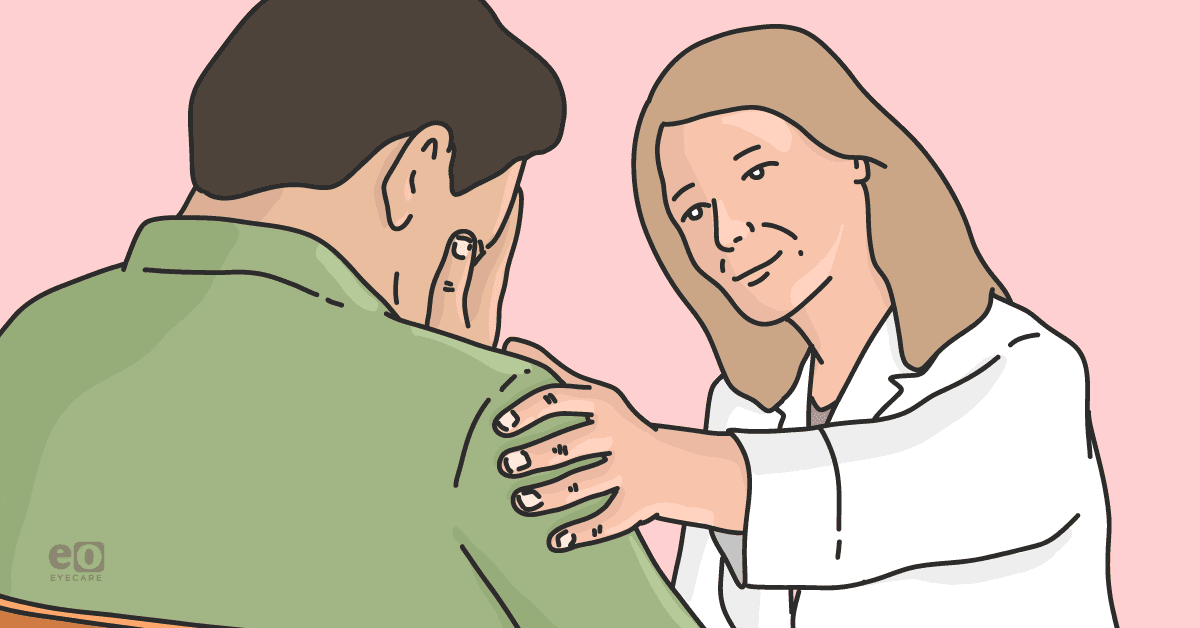The Relationship Between Dry Eye, Mental Health, and Chronic Pain
Discover how ophthalmologists can treat dry eye patients with a holistic approach by uncovering the relationship between dry eye, mental health, and chronic pain.
- Craig JP, Nichols KK, Akpek EK, et al. TFOS DEWS II Definition and Classification Report. Ocul Surf. 2017;15(3):276-83.
- Mehra D, Cohen NK, Galor A. Ocular Surface Pain: A Narrative Review. Ophthalmol Ther. 2020;9(3):1-21.
- Kalangara JP, Galor A, Levitt RC, et al. Characteristics of Ocular Pain Complaints in Patients With Idiopathic Dry Eye Symptoms. Eye Contact Lens. 2017;43(3):192-8.
- Galor A, Britten-Jones AC, Feng Y, et al. TFOS Lifestyle: Impact of lifestyle challenges on the ocular surface. Ocul Surf. 2023;28:262-303.
- Løge-Hagen JS, Sæle A, Juhl C, et al. Prevalence of depressive disorder among patients with fibromyalgia: Systematic review and meta-analysis. J Affect Disord. 2019;245:1098-105.
- Baksh BS, Garcia JC, Galor A. Exploring the link between dry eye and migraine: from eye to brain. Eye Brain. 2021:41-57.
- Farhangi M, Diel RJ, Buse DC, et al. Individuals with migraine have a different dry eye symptom profile than individuals without migraine. Br J Ophthalmol. 2020;104(2):260-4.
- Basilious A, Xu CY, Malvankar-Mehta MS. Dry eye disease and psychiatric disorders: A systematic review and meta-analysis. Eur J Ophthalmol. 2021;32(4):1872-89.
- Galor A, Moein HR, Lee C, et al. Neuropathic pain and dry eye. Ocul Surf. 2018;16(1):31-44.
- Vancleef LM, Peters ML. Pain catastrophizing, but not injury/illness sensitivity or anxiety sensitivity, enhances attentional interference by pain. J Pain. 2006;7(1):23-30.
- Patel S, Felix ER, Levitt RC, et al. Dysfunctional Coping Mechanisms Contribute to Dry Eye Symptoms. J Clin Med. 2019;8(6).
- Turner JA, Ersek M, Kemp C. Self-efficacy for managing pain is associated with disability, depression, and pain coping among retirement community residents with chronic pain. J Pain. 2005;6(7):471-9.
- Skinner EA, Edge K, Altman J, Sherwood H. Searching for the structure of coping: a review and critique of category systems for classifying ways of coping. Psychol Bull. 2003;129(2):216.
Dr. Sneh Patel is a recent graduate of the University of Miami Miller School of Medicine. His research focus is chronic ocular disorders such as dry eye disease, with a specific interest in the evaluation and treatment of acute and chronic ocular pain.
He is pursuing a residency in physical medicine and rehabilitation at the VA-UCLA Medical Center in Los Angeles, CA, after which he hopes to complete a fellowship in interventional pain medicine.
Dr. Galor is a cornea and uveitis trained specialist with a dual appointment at the Miami Veterans Affairs (VA) medical center and the Bascom Palmer Eye Institute, University of Miami Miller School of Medicine. Dr. Galor completed an ophthalmology residency at the Cole Eye Cleveland Clinic, a uveitis fellowship at the Wilmer Eye Institute, Johns Hopkins University, and a cornea and external diseases fellowship at Bascom Palmer Eye Institute. Dr. Galor currently runs the ocular surface program at the Miami VA and has focused her research on understanding mechanisms of pain in dry eye, with an emphasis on studying new diagnostic and treatment modalities. She has lectured and published extensively on how nerve status may underlie the often noted disconnect between dry eye symptoms and signs. This includes individuals with decreased sensation and chronic epithelial abnormalities (neurotrophic phenotype) and individuals with hypersensitive nerves and chronic ocular pain with minimal ocular surface abnormalities (neuropathic phenotype). Over the years, she has participated in several dry eye-related committees including the Tear Film and Ocular Surface Society (TFOS) Dry Eye Workshop (DEWS) II Pain and Sensation Committee and the Dry Eye Awareness Month Congressional Briefing. In addition, she served as President of the Ocular Microbiology and Immunology Group and sits on several educational committees within the Academy of Ophthalmology.
